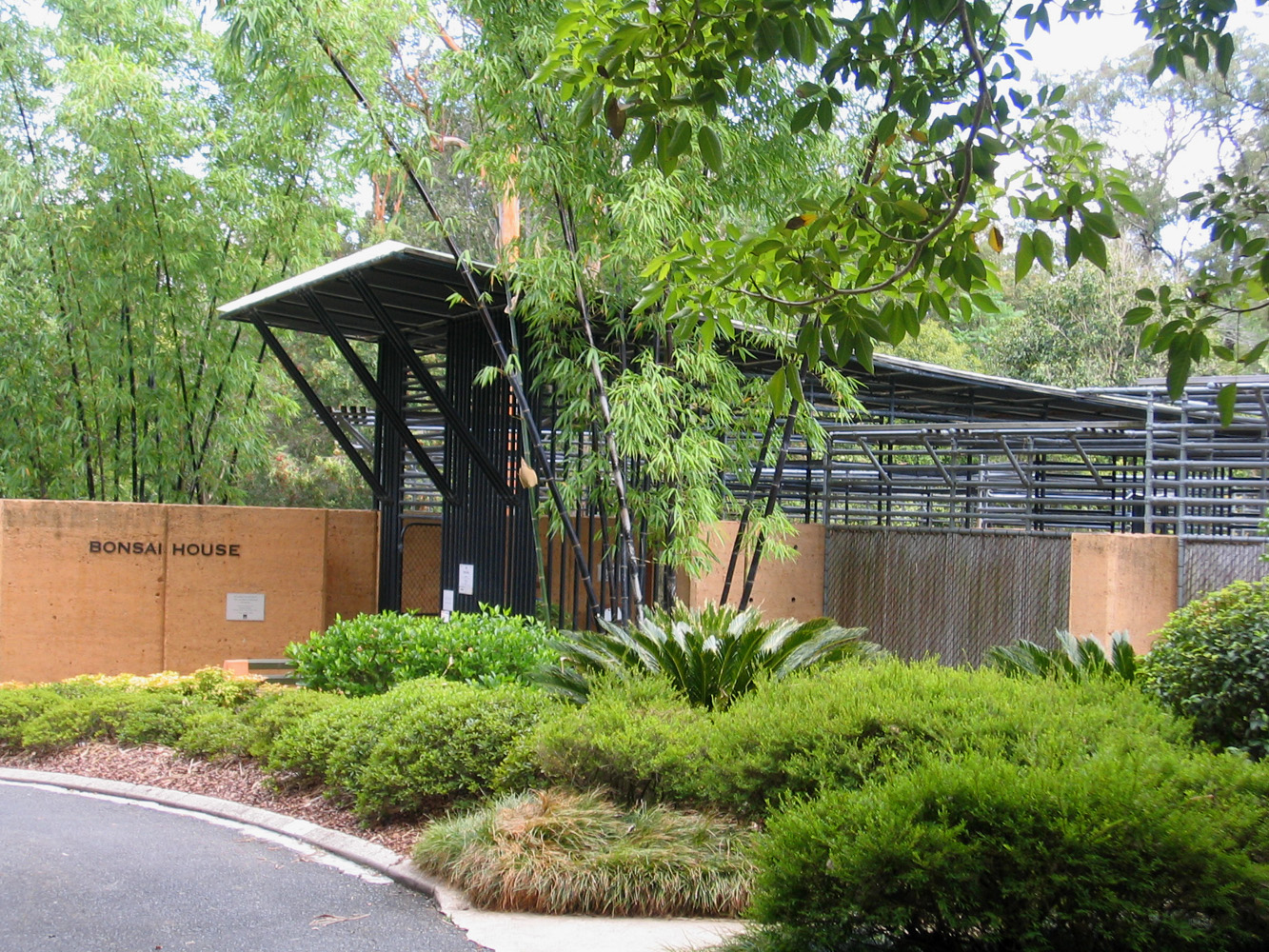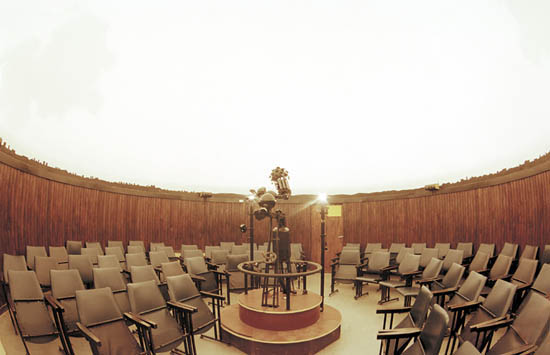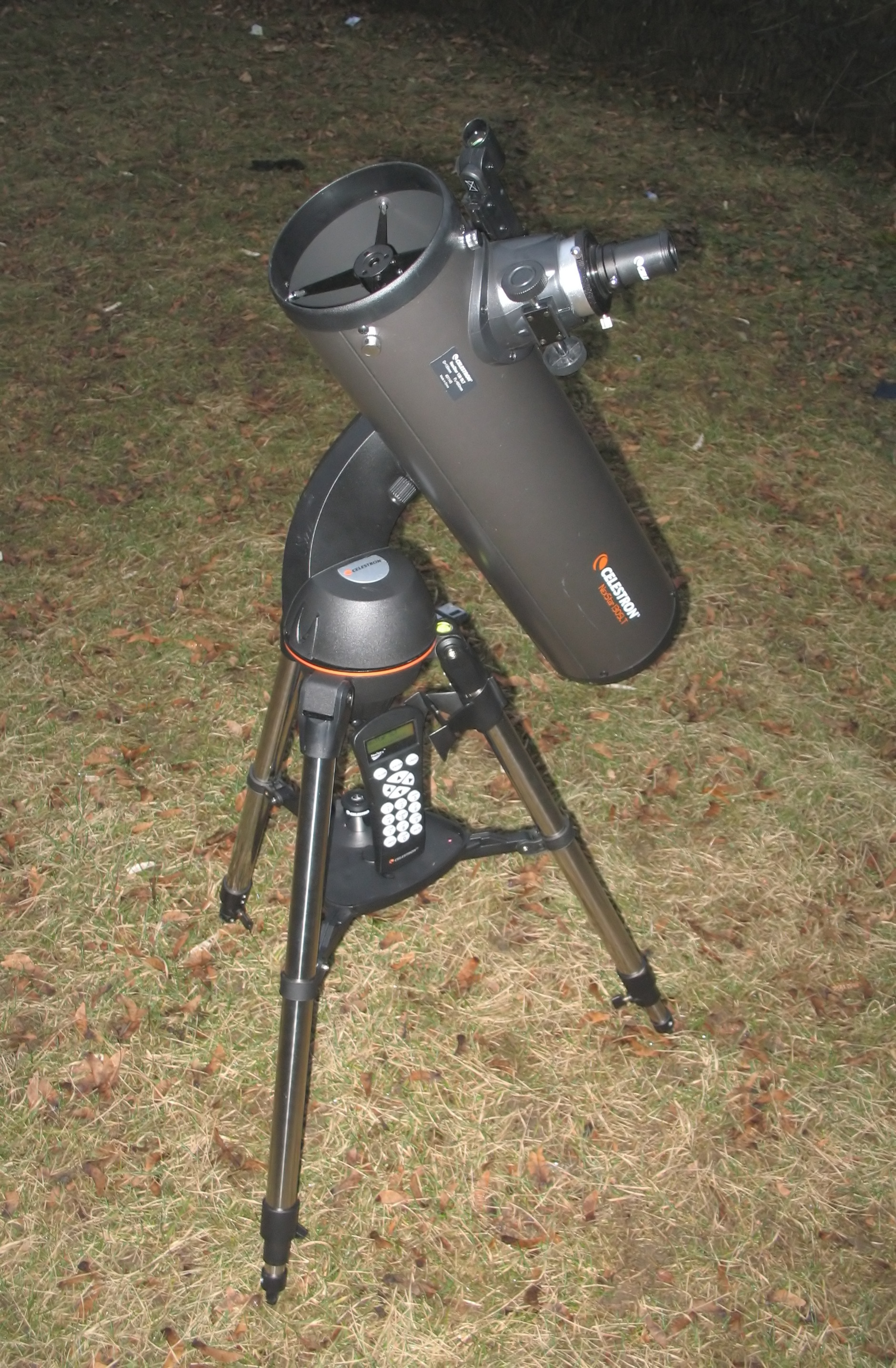|
Sir Thomas Brisbane Planetarium
The Sir Thomas Brisbane Planetarium is located on the grounds of the Brisbane Botanic Gardens in the suburb of Mount Coot-tha, Brisbane, Queensland, Australia. The Planetarium was officially opened on 24 May 1978. The Planetarium is named after Sir Thomas Brisbane, governor of the colony of New South Wales (1821 - 1825) and well known Scottish astronomer who established the first significant observatory at Parramatta, Australia, in 1822 for mapping the southern skies. The Planetarium is located about from the Central Business District, and is administered by the Brisbane City Council. The Planetarium features the 12.5m diameter Cosmic Skydome (hemispherical planetarium theatre) with a maximum concentric seating capacity of 130. Extensive space exploration and astronomy displays in the Planetarium's Foyer and Gallery include the 1969 Apollo 11 Moon landing with a replica of Neil Armstrong's space suit and a 1/48-scale Saturn V rocket, meteorites, and numerous models of spacec ... [...More Info...] [...Related Items...] OR: [Wikipedia] [Google] [Baidu] |
Brisbane Botanic Gardens, Mount Coot-tha
The Brisbane Botanic Gardens (formerly the Mount Coot-tha Botanic Gardens and informally the Toowong Botanic Gardens) are located from the Brisbane CBD at the foot of Brisbane's tallest mountain, Mount Coot-tha in the suburb of Mount Coot-tha, Queensland, Australia. History The gardens, which were originally called the Mount Coot-tha Botanic Gardens and which cover , were established by the Brisbane City Council in 1970, and officially opened in 1976. The gardens are the second botanical gardens established in Brisbane. The original gardens, now known as the City Botanic Gardens are located in the Brisbane CBD at Gardens Point. The new gardens were developed by the City Council because the original city site could not be expanded and was flood prone. The Mount Coot-tha Library at the gardens opened in 1975. Features Features of the Brisbane Botanic Gardens include: * Tropical Display Dome — opened in December 1977, 28 m in diameter and 9 m high * Japanese Garden * Bon ... [...More Info...] [...Related Items...] OR: [Wikipedia] [Google] [Baidu] |
Space Telescope Science Institute
The Space Telescope Science Institute (STScI) is the science operations center for the Hubble Space Telescope (HST), science operations and mission operations center for the James Webb Space Telescope (JWST), and science operations center for the Nancy Grace Roman Space Telescope. STScI was established in 1981 as a community-based science center that is operated for NASA by the Association of Universities for Research in Astronomy (AURA). STScI's offices are located on the Johns Hopkins University Homewood Campus and in the Rotunda building in Baltimore, Maryland. In addition to performing continuing science operations of HST and preparing for scientific exploration with JWST and Roman, STScI manages and operates the Mikulski Archive for Space Telescopes (MAST), which holds data from numerous active and legacy missions, including HST, JWST, Kepler, TESS, Gaia, and Pan-STARRS. Most of the funding for STScI activities comes from contracts with NASA's Goddard Space Flight Center b ... [...More Info...] [...Related Items...] OR: [Wikipedia] [Google] [Baidu] |
Education In Brisbane
Brisbane ( ) is the capital and most populous city of the states and territories of Australia, Australian state of Queensland, and the list of cities in Australia by population, third-most populous city in Australia and Oceania, with a population of approximately 2.6 million. Brisbane lies at the centre of the South East Queensland metropolitan region, which encompasses a population of around 3.8 million. The Brisbane central business district is situated within a peninsula of the Brisbane River about from its mouth at Moreton Bay, a bay of the Coral Sea. Brisbane is located in the hilly floodplain of the Brisbane River Valley between Moreton Bay and the Taylor Range, Taylor and D'Aguilar Range, D'Aguilar mountain ranges. It sprawls across several local government in Australia, local government areas, most centrally the City of Brisbane, Australia's most populous local government area. The demonym of Brisbane is ''Brisbanite''. The Traditional Owners of the Brisbane a ... [...More Info...] [...Related Items...] OR: [Wikipedia] [Google] [Baidu] |
Planetaria In Australia
A planetarium ( planetariums or ''planetaria'') is a theatre built primarily for presenting educational and entertaining shows about astronomy and the night sky, or for training in celestial navigation. A dominant feature of most planetariums is the large dome-shaped projection screen onto which scenes of stars, planets, and other celestial objects can be made to appear and move realistically to simulate their motion. The projection can be created in various ways, such as a star ball, slide projector, video, fulldome projector systems, and lasers. Typical systems can be set to simulate the sky at any point in time, past or present, and often to depict the night sky as it would appear from any point of latitude on Earth. Planetaria range in size from the 37 meter dome in St. Petersburg, Russia (called “Planetarium No 1”) to three-meter inflatable portable domes where attendees sit on the floor. The largest planetarium in the Western Hemisphere is the Jennifer Chalsty Plan ... [...More Info...] [...Related Items...] OR: [Wikipedia] [Google] [Baidu] |
Buildings And Structures Completed In 1978
A building, or edifice, is an enclosed structure with a roof and walls standing more or less permanently in one place, such as a house or factory (although there's also portable buildings). Buildings come in a variety of sizes, shapes, and functions, and have been adapted throughout history for a wide number of factors, from building materials available, to weather conditions, land prices, ground conditions, specific uses, prestige, and aesthetic reasons. To better understand the term ''building'' compare the list of nonbuilding structures. Buildings serve several societal needs – primarily as shelter from weather, security, living space, privacy, to store belongings, and to comfortably live and work. A building as a shelter represents a physical division of the human habitat (a place of comfort and safety) and the ''outside'' (a place that at times may be harsh and harmful). Ever since the first cave paintings, buildings have also become objects or canvasses of much artistic ... [...More Info...] [...Related Items...] OR: [Wikipedia] [Google] [Baidu] |
Buildings And Structures In Brisbane
A building, or edifice, is an enclosed structure with a roof and walls standing more or less permanently in one place, such as a house or factory (although there's also portable buildings). Buildings come in a variety of sizes, shapes, and functions, and have been adapted throughout history for a wide number of factors, from building materials available, to weather conditions, land prices, ground conditions, specific uses, prestige, and aesthetic reasons. To better understand the term ''building'' compare the list of nonbuilding structures. Buildings serve several societal needs – primarily as shelter from weather, security, living space, privacy, to store belongings, and to comfortably live and work. A building as a shelter represents a physical division of the human habitat (a place of comfort and safety) and the ''outside'' (a place that at times may be harsh and harmful). Ever since the first cave paintings, buildings have also become objects or canvasses of much artistic ... [...More Info...] [...Related Items...] OR: [Wikipedia] [Google] [Baidu] |
Tourist Attractions In Brisbane
Tourism is travel for pleasure or business; also the theory and practice of touring (other), touring, the business of attracting, accommodating, and entertaining tourists, and the business of operating tour (other), tours. The World Tourism Organization defines tourism more generally, in terms which go "beyond the common perception of tourism as being limited to holiday activity only", as people "travelling to and staying in places outside their usual environment for not more than one consecutive year for leisure and not less than 24 hours, business and other purposes". Tourism can be Domestic tourism, domestic (within the traveller's own country) or International tourism, international, and international tourism has both incoming and outgoing implications on a country's balance of payments. Tourism numbers declined as a result of a strong economic slowdown (the late-2000s recession) between the second half of 2008 and the end of 2009, and in consequence of t ... [...More Info...] [...Related Items...] OR: [Wikipedia] [Google] [Baidu] |
Sundial
A sundial is a horological device that tells the time of day (referred to as civil time in modern usage) when direct sunlight shines by the apparent position of the Sun in the sky. In the narrowest sense of the word, it consists of a flat plate (the ''dial'') and a gnomon, which casts a shadow onto the dial. As the Sun appears to move through the sky, the shadow aligns with different hour-lines, which are marked on the dial to indicate the time of day. The ''style'' is the time-telling edge of the gnomon, though a single point or ''nodus'' may be used. The gnomon casts a broad shadow; the shadow of the style shows the time. The gnomon may be a rod, wire, or elaborately decorated metal casting. The style must be parallel to the axis of the Earth's rotation for the sundial to be accurate throughout the year. The style's angle from horizontal is equal to the sundial's geographical latitude. The term ''sundial'' can refer to any device that uses the Sun's altitude or azimut ... [...More Info...] [...Related Items...] OR: [Wikipedia] [Google] [Baidu] |
Astronautics
Astronautics (or cosmonautics) is the theory and practice of travel beyond Earth's atmosphere into outer space. Spaceflight is one of its main applications and space science its overarching field. The term ''astronautics'' (originally ''astronautique'' in French) was coined in the 1920s by J.-H. Rosny, president of the Goncourt academy, in analogy with aeronautics. Because there is a degree of technical overlap between the two fields, the term aerospace is often used to describe both at once. In 1930, Robert Esnault-Pelterie published the first book on the new research field. The term ''cosmonautics'' (originally ''cosmonautique'' in French) was introduced in 1930s by Ary Sternfeld with his book ''Initiation à la Cosmonautique'' (Introduction to cosmonautics) (the book brought him the Prix REP-Hirsch, later known as the Prix d'Astronautique, of the French Astronomical Society in 1934.) As with aeronautics, the restrictions of mass, temperatures, and external forces require t ... [...More Info...] [...Related Items...] OR: [Wikipedia] [Google] [Baidu] |
Konstantin Tsiolkovsky
Konstantin Eduardovich Tsiolkovsky (russian: Константи́н Эдуа́рдович Циолко́вский , , p=kənstɐnʲˈtʲin ɪdʊˈardəvʲɪtɕ tsɨɐlˈkofskʲɪj , a=Ru-Konstantin Tsiolkovsky.oga; – 19 September 1935) was a Russian and Soviet rocket scientist who pioneered astronautic theory. Along with the Frenchman Robert Esnault-Pelterie, the Germans Hermann Oberth and Fritz von Opel, and the American Robert H. Goddard, he is one of the founding fathers of modern rocketry and astronautics. His works later inspired leading Soviet rocket-engineers Sergei Korolev and Valentin Glushko, who contributed to the success of the Soviet space program. Tsiolkovsky spent most of his life in a log house on the outskirts of Kaluga, about southwest of Moscow. A recluse by nature, his unusual habits made him seem bizarre to his fellow townsfolk. Early life Tsiolkovsky was born in Izhevskoye (now in Spassky District, Ryazan Oblast), in the Russian Empire, to ... [...More Info...] [...Related Items...] OR: [Wikipedia] [Google] [Baidu] |
GoTo (telescopes)
{{unreferenced, date=February 2014 In amateur astronomy, "GoTo" refers to a type of telescope mount and related software that can automatically point a telescope at astronomical objects that the user selects. Both axes of a GoTo mount are driven by a motor and controlled by a computer. It may be either a microprocessor-based integrated controller or an external personal computer. This differs from the single-axis semi-automated tracking of a traditional clock-drive equatorial mount. The user can command the mount to point the telescope to the celestial coordinates that the user inputs, or to objects in a pre-programmed database including ones from the Messier catalogue, the New General Catalogue, and even major Solar System bodies (the Sun, Moon, and planets). Like a standard equatorial mount, equatorial GoTo mounts can track the night sky by driving the right ascension axis. Since both axes are computer controlled, GoTo technology also allows telescope manufacturers to add eq ... [...More Info...] [...Related Items...] OR: [Wikipedia] [Google] [Baidu] |






.jpg)

